Presenting: The Aqua Line! Little known outside of Japan and civil engineering circles, it is one of the coolest things in Japan to see. Not just because of the road, but because of the amazing view.
The Aqua-Line is a bridge-tunnel complex that spans Tokyo Bay. It’s a very important part of the regional road network because it connects the country’s major international airport at Narita in Chiba Prefecture (east) with the city’s second and third largest urban areas (Yokohama and Osaka) to the west – bypassing Tokyo and it’s traffic completely. It’s also part of the larger Tokyo freeway network in that it is part of the third beltway project, which is currently under construction. In the center of the span sits the Umi-Hotaru (Ocean-Firefly) – an artificial island with a viewing platform and visitor’s area.

LED signs warn of high winds upon entrance of exit of the tunnel when needed. The bridge portion of the span is 4 km long, while the tunnel section is 9.6 km long, making it one of the world’s longest road tunnels – and the longest road tunnel on earth that runs under a body of water. Large numbers on each side of the tunnel tell the driver how much longer it is to the end (8km……..7km……….etc)

The western entrance to the span consists of a large four-level stack, in which the lowest level is partially buried underground. The entire interchange sits on a manmade island just off the coast of the city of Kawasaki. The aqua line is prominently signed all around the Kawasaki/Yokohama area. Traffic LED signs warn of backups on the road. Occassionally an accident on the aqua line (Japanese drivers speed like mad) will back up traffic for up to 8 hours.

The Aqua Line is a toll facility, and indeed is one of the most expensive toll facilities in the world. When constructed, the road cost 4,000 yen to traverse – which translates to about $40 US dollars. No one used it. In 2000 the toll was reduced to 3,000 yen to increase traffic, but that did not work much either. The Aqua Line continues to be a money pit year after year. Drivers exiting the aqua to the east can continue into Chiba on the Tateyama Expressway, or meader to the Ocean going straight ahead. Its not signed anywhere, but the span sends National Route 409 over the bay, and is signed as Shuto Expressway K3 on the western side.
Now for two views (click for larger)

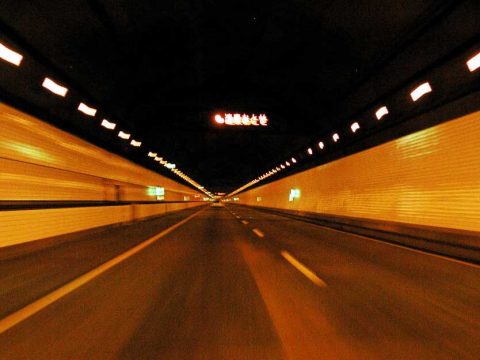
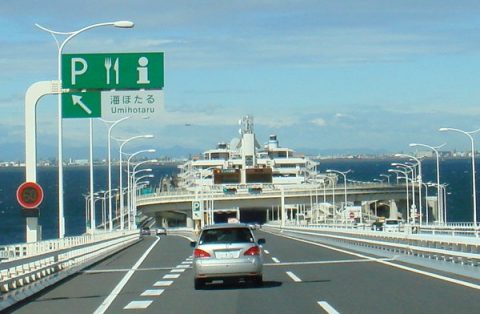
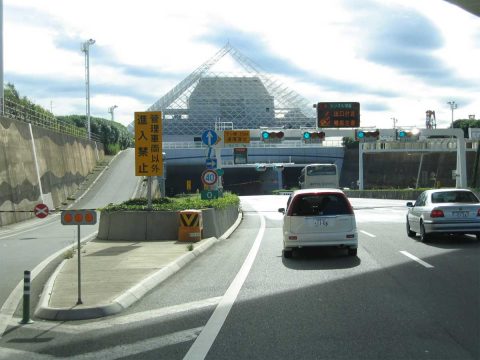
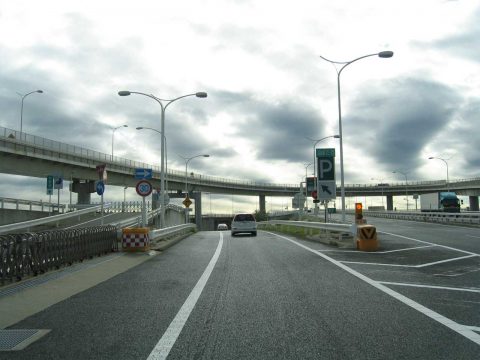
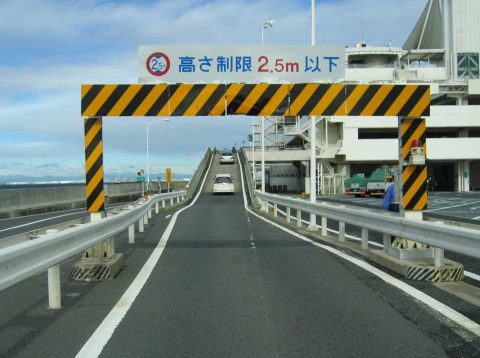

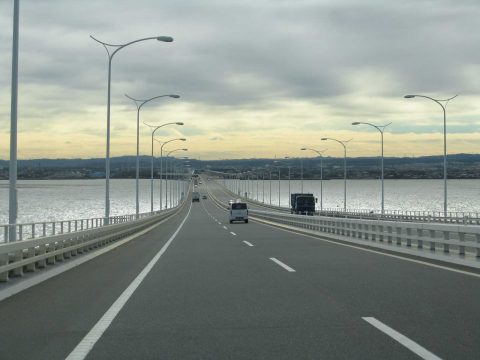

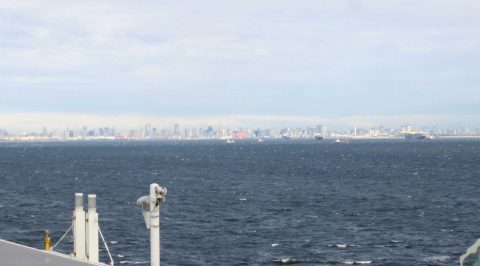
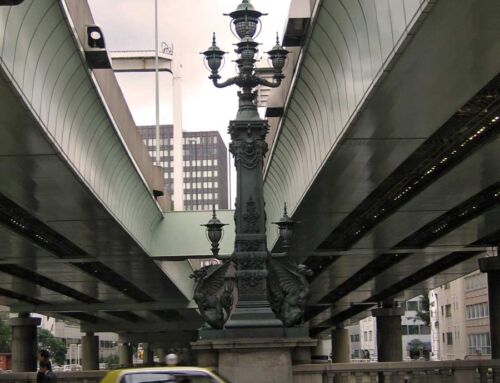
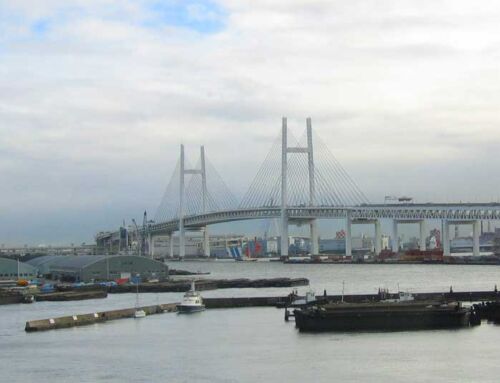
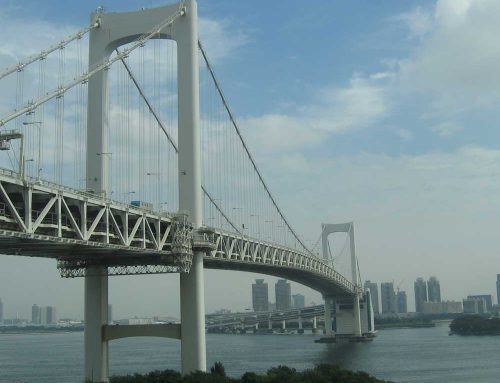
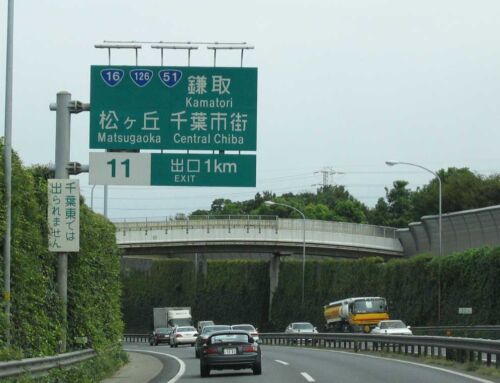
Sounds like Japan’s equivalent (and upgrading) of the Chesapeake Bay Complex in Virginia…Impressive!